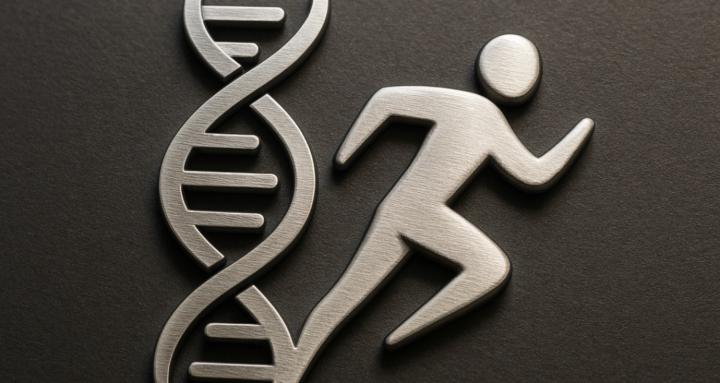Aug 2 (edited) • Article Series
Fat Loss Decoded — Part 1: Mobilization and Transport (The Most Overlooked Step)
Fat loss doesn’t start with cardio. Or fasting. Or even a calorie defecit it starts with a signal.
That signal tells your body, “We need fuel. Tap into the reserves.”But unlocking stored fat is only half the story. The real challenge is getting that fat where it needs to go so it can actually be burned.
Let’s break it down clearly: before fat can be used as energy, it has to go through two critical steps lipolysis and transport. Without both, there is no true fat loss.
Fat is stored in your adipose tissue as triglycerides three fatty acids bound to a glycerol backbone. These are compact, stable, and metabolically inert. To use them for fuel, the body first breaks them apart. This is called lipolysis.
Lipolysis is triggered when insulin is low and counter-regulatory hormones like adrenaline, cortisol, and growth hormone rise. Exercise, fasting, cold exposure, and stimulants can all push this button. The result: free fatty acids and glycerol are released into the bloodstream.
But—and this is crucial—those fatty acids aren’t automatically burned.They’re just mobilized. Now they’re floating around, waiting to be used… or re-stored.
If the next step transport doesn’t happen efficiently, those fatty acids never make it to the mitochondria. They get recycled, turned back into fat, or contribute to inflammation To reach the mitochondria, long-chain fatty acids require a shuttle system.That shuttle is carnitine. Carnitine binds to fatty acids and helps escort them across the inner mitochondrial membrane. This process is called the carnitine shuttle, and it’s the rate-limiting step in fat oxidation. If this system is underpowered, you’ll struggle to lose fat no matter how “in a deficit” you are. There are different forms of carnitine, each with unique properties. L-carnitine tartrate is used in performance and recovery settings. Acetyl-L-carnitine (ALCAR) crosses the blood-brain barrier and supports both mental energy and mitochondrial function. Carnitine fumarate adds cardiovascular support and works well in metabolic dysfunction. Injectable carnitine bypasses gut absorption issues and results in higher blood and tissue concentrations, making it especially effective when timed around fasted cardio or training.
Another major player in this process is AMPK, or AMP-activated protein kinase. AMPK is the energy sensor in your cells. When your body is low on energy (like during fasting or exercise) AMPK gets activated. This shifts the body into a fat-burning state. It increases lipolysis, enhances the activity of enzymes that support fatty acid metabolism, and helps move fatty acids into the mitochondria. AMPK activation essentially clears the path so fat can be mobilized and prepared for oxidation.
An often-overlooked but powerful tool for improving this entire first phase is a specific probiotic strain: Lactobacillus gasseri BNR17 (formerly classified as L. biaba). This strain has been shown to activate AMPK in adipose and liver tissue, promote lipolysis, reduce fat accumulation, and improve metabolic flexibility. Through gut–mitochondria signaling, it helps shift the body toward a fat-preferred energy state. It also improves insulin sensitivity, which plays a critical role in how well the carnitine shuttle functions. Think of it as a behind-the-scenes amplifier quietly optimizing the hormonal and enzymatic environment that makes fat mobilization and transport more efficient.
To recap what we have learned so far, the early stage of fat loss, focuses on:
- Mobilizing stored fat (lipolysis)
- Activating AMPK to support energy turnover
- Ensuring transport into mitochondria (via carnitine)
- Supporting the metabolic environment through the gut-liver-mitochondria axis
Below I am listing some proven interventions that directly support this phase with a breif explination of they work:
- Carnitine (oral or injectable): Binds long-chain fatty acids and transports them into mitochondria where they can be used for energy.
- Acetyl-L-carnitine: Supports both fat transport and acetyl-CoA supply to the Krebs cycle. Also helps reduce brain fog during fat loss.
- MOTS-c: A mitochondrial peptide that activates AMPK and improves fatty acid uptake and utilization under energy stress.
- BAM15: A mitochondrial uncoupler that increases the demand for fat as fuel by making the mitochondria less efficient. This drives higher rates of fatty acid entry and oxidation.
- Telmisartan: Activates PPAR-delta, which increases enzymes involved in fat transport and oxidation. Also mildly activates AMPK.
- Berberine: A botanical AMPK activator that mimics the effects of metformin without GI side effects. Shifts energy preference toward fat.
- Lactobacillus gasseri BNR17: Supports lipolysis, improves AMPK activation, reduces visceral fat, and creates a gut-brain-metabolic signal that favors fat loss.
- Zone 2 cardio: Low-intensity aerobic work enhances mitochondrial density, improves fatty acid transport, and activates AMPK without excessive stress.
- Red light therapy: Supports mitochondrial membrane potential, enhancing readiness for fatty acid entry and oxidation.
Most people skip this phase and go straight to “burning calories.” But if your fatty acids never make it into the mitochondria, you’re just moving energy around, not losing it.
Mastering lipolysis and transport gives your fat a destination.Without it, you’re just doing expensive cardio with no ROI.
In Part 2, we’ll cover what happens inside the mitochondria. We will look at the way beta-oxidation actually generates energy, how mitochondrial structure impacts fat burning, and how to make the whole system more efficient without crashing your metabolism. Stay tuned......
26
20 comments

skool.com/castore-built-to-adapt-7414
Where science meets results. Learn peptides, training, recovery & more. No ego, no fluff—just smarter bodies, better minds, built to adapt.
Powered by





